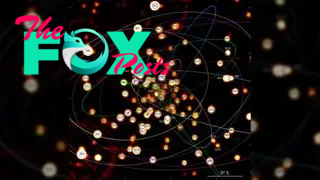Science
Baby stars that defy explanation are 'swarming like bees' around Milky Way's supermassive black hole
Inexplicably young stars are barreling through space at breakneck speeds as they circle precariously close to the supermassive black hole at the center of the Milky Way. This stellar dance may initially appear to be random, but a new study has revealed that these infant stars are moving around in a surprisingly organized manner, similar to swarming insects like bees.
Around 30 years ago, researchers first discovered a group of around 100 stars, known as the S-cluster, orbiting extremely closely to the Milky Way's black hole heart, Sagittarius A* (Sgr A*). These stars, known as S-stars, are all relatively young — less than 100 million years old — and are all located within a few light-years of the giant black hole. The intense gravity from the space-time tear propels the stars to speeds more than 2.2 million mph (3.5 million km/h) — around five times faster than the sun travels through the Milky Way.
Since their discovery, S-stars have been a point of contention among astronomers due to their surprisingly young ages. Past observations and current theories suggest that only the oldest stars in a galaxy should be found this close to a supermassive black hole, but this is clearly not the case.
But in the last decade, scientists have also spotted around a dozen more objects intermingled with the circling S-stars. These entities, known as young stellar objects (YSOs), are just a few million years old and still not fully formed but zip around Sgr A* just as fast as S-stars.
"The S stars were found to be surprisingly young," study lead author Florian Peißker, an astrophysicist at the University of Cologne in Germany, said in a statement. "According to conventional theories, the additional presence of a stellar kindergarten composed of YSOs is completely unexpected."
Related: James Webb telescope reveals 'nursery' of 500,000 stars in the chaotic heart of the Milky Way

In the new study, published June 14 in the journal Astronomy and Astrophysics, researchers analyzed the movements of the YSOs and some S-stars to see how they orbited Sgr A*. This revealed hidden patterns and regularities, similar to swarming bees, which appear as chaotic masses at first glance but are actually highly organized.
-

 Science4d ago
Science4d agoInside Capitol Hill’s Latest UFO Hearings
-

 Science4d ago
Science4d agoYou Won’t Want to Miss the Leonid Meteor Shower. Here’s How and When You Can See It
-

 Science5d ago
Science5d agoHere’s What Trump’s Win Means for NASA
-

 Science1w ago
Science1w agoWhy Risky Wildfire Zones Have Been Increasing Around the World
-

 Science1w ago
Science1w agoIt’s Time to Redefine What a Megafire Is in the Climate Change Era
-

 Science1w ago
Science1w ago4 Astronauts Return to Earth After Being Delayed by Boeing’s Capsule Trouble and Hurricane Milton
-

 Science1w ago
Science1w agoThe Elegance and Awkwardness of NASA’s New Moon Suit, Designed by Axiom and Prada
-

 Science2w ago
Science2w agoSpaceX Launches Its Mega Starship Rocket. This Time, Mechanical Arms Catch It at Landing



























